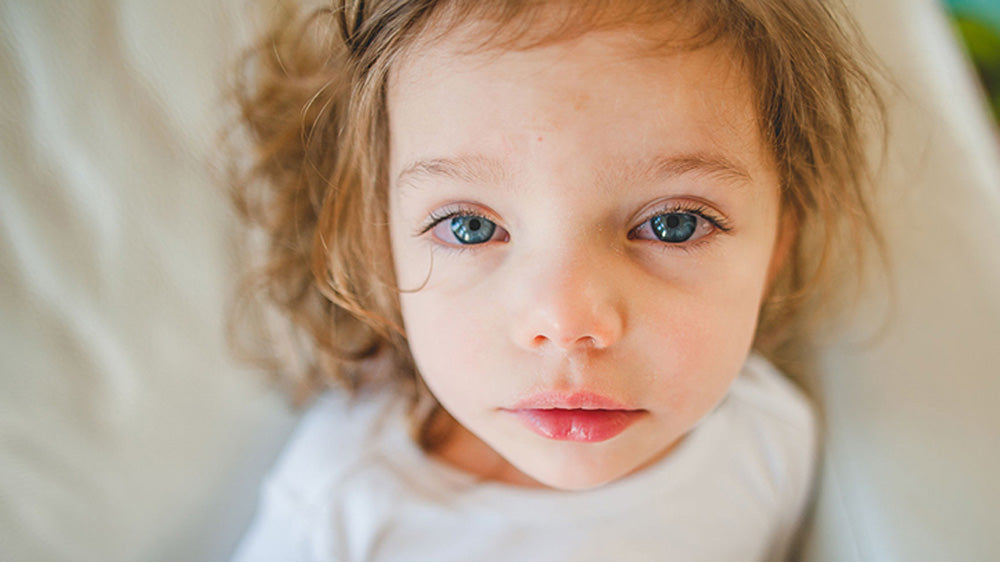Pink eye, or conjunctivitis, is a common yet usually mild infection that often looks more severe than it is. Much like a common cold, pink eye can spread easily, especially among young children. However, it’s manageable with proper care. Here’s a comprehensive guide on identifying, treating, and preventing pink eye in babies and toddlers.
Causes of Pink Eye in Babies and Toddlers
Pink eye can result from various sources, each requiring different approaches for treatment and prevention.
-
Viral Infections
Common viruses, like those responsible for colds, often cause viral pink eye. This form is akin to a “cold in the eye” and is usually mild but highly contagious. -
Bacterial Infections
Certain bacteria, including those that cause strep throat, can also lead to bacterial pink eye. This type can be more uncomfortable, with sticky discharge and soreness, and may accompany an ear infection. -
Allergens
Environmental allergens like dust, pollen, pet dander, and mould can trigger allergic pink eye, which is usually not contagious but can cause significant discomfort. -
Irritants
Chlorine from swimming pools, smoke, or high pollution levels can also cause irritation and lead to non-contagious pink eye.
In newborns, pink eye may develop from exposure to bacteria during birth. To prevent such infections, newborns often receive antibiotic eye drops or ointments immediately after birth, which can cause mild, temporary irritation.
Is Pink Eye Contagious?
- Viral and Bacterial Pink Eye: Highly contagious and spreads quickly through contact with eye discharge or respiratory droplets from coughs and sneezes.
- Allergic and Irritant Pink Eye: Not contagious, as these forms are due to environmental factors rather than infectious agents.
Recognising Pink Eye Symptoms
Symptoms of pink eye in babies and toddlers vary depending on the cause, and each type has distinct signs.
- Viral Pink Eye
- Red, watery eyes (one or both)
- Burning or itching sensation
- Potential cold symptoms like fever, sore throat, or congestion
- Bacterial Pink Eye
- Pink or red eyes with yellow or green discharge
- Possible eye pain
- May occur alongside an ear infection
- Allergic Pink Eye
- Red, itchy eyes (usually both)
- Runny or stuffy nose, common during allergy seasons
- Symptoms often appear when pollen counts are high or allergens are present
- Irritant-Related Pink Eye
- Red, watery eyes and puffy eyelids
- Often follows exposure to irritants like chlorine or smoke
Treating Pink Eye in Babies and Toddlers
The treatment approach depends on the cause of the pink eye.
- Bacterial Pink Eye: Paediatricians may prescribe antibiotic eye drops or ointment, as only bacterial infections respond to antibiotics. Improvement is usually seen within 24 hours of starting antibiotics.
- Viral Pink Eye: Often resolves on its own within a week. Treatment focuses on symptom relief, such as using cool compresses or artificial tears, and preventing the spread of the virus.
- Allergic Pink Eye: Antihistamine eye drops can alleviate symptoms. Avoiding known allergens and using air purifiers indoors can also help manage allergic reactions.
- Irritant-Related Pink Eye: Rinsing the eyes with cool, clean water can help soothe irritation. Keeping children away from irritants, like smoke or strong chemicals, reduces recurrence.
Ways to Keep Your Child Comfortable
Managing pink eye at home can ease your child’s discomfort and help speed recovery. Here are some helpful strategies:
- Eye Care: Use a clean, damp cloth, gauze, or cotton ball to gently wipe any discharge from your child’s eyes, especially after sleep.
- Compresses: For viral or bacterial pink eye, use warm compresses to soothe discomfort. Cool compresses are effective for allergic or irritant-related pink eye.
- Pain Relief: With your paediatrician’s guidance, consider using acetaminophen to ease discomfort. Ibuprofen can also be used for children over 6 months.
- Eye Drops: Artificial tears can help relieve irritation, but always consult with your paediatrician before administering any eye drops.
- Breast Milk Warning: While some may recommend using breast milk, this is ineffective and can introduce bacteria, potentially worsening the infection.
How Long Does Pink Eye Last?
Most cases of pink eye clear up within 1 to 2 weeks, depending on the type. Bacterial infections often improve within a day of starting antibiotics, while viral infections may take a bit longer. Allergic and irritant-related pink eye usually subside once the allergen or irritant is removed.
Preventing the Spread of Pink Eye
When dealing with viral or bacterial pink eye, taking precautions to prevent the spread of infection is crucial:
- Wash your child’s towels and bed linens separately and change them daily.
- Use a clean towel or tissue each time you wipe your child’s eyes.
- Encourage regular handwashing with soap and warm water.
- Disinfect frequently touched surfaces, like toys, door handles, and countertops.
- Inform your child’s daycare so they can take extra steps to prevent spreading.
- Remind family members not to touch their eyes.
When to See a Doctor
Most cases of pink eye are mild, but there are times when medical attention is necessary:
- If symptoms persist beyond two weeks or worsen
- If your child experiences vision problems, increased sensitivity to light, or unusually red eyes
- If there are signs of infection around the eyes, such as pus, redness, or warmth
- In rare cases, severe pink eye may be linked to viruses like herpes or chickenpox, which require antiviral treatment
Your paediatrician can help determine the underlying cause and recommend the best course of action, whether that’s managing symptoms at home or starting treatment.

